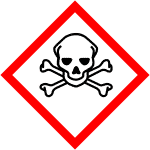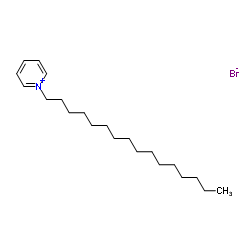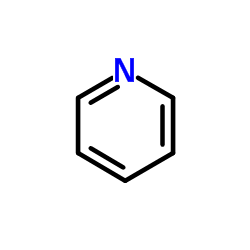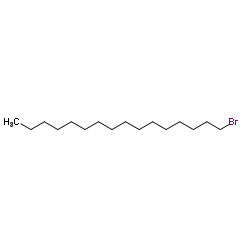溴代十六烷基吡啶, 99%,Hexadecylpyridinium bromide
产品编号:西域试剂-WR178740| CAS NO:140-72-7| MDL NO:MFCD00011988| 分子式:C21H38BrN| 分子量:384.44
本网站销售的所有产品仅用于工业应用或者科学研究等非医疗目的,不可用于人类或动物的临床诊断或者治疗,非药用,非食用,
| 产品名称 | 溴代十六烷基吡啶, 99% |
|---|---|
| 英文名称 | Hexadecylpyridinium bromide |
| CAS编号 | 140-72-7 |
| 产品熔点 | 63-69 °C |
| 精确质量 | 383.218750 |
| PSA | 3.88000 |
| LogP | 3.45940 |
| 外观性状 | 奶油色的,蜡质固体 |
| 溶解性 | 5 g/L (20 ºC) |
| 稳定性 | 常温常压下稳定。 |
| 储存条件 | 密封阴凉干燥保存。 |
相关文档
化学品安全说明书(MSDS)
下载MSDS质检证书(COA)
相关产品
| 符号 |

GHS06 |
|---|---|
| 信号词 | Danger |
| 危害声明 | H302-H315-H319-H330-H335-H413 |
| 警示性声明 | P260-P284-P305 + P351 + P338-P310 |
| 个人防护装备 | Eyeshields;Faceshields;full-face particle respirator type N100 (US);Gloves;respirator cartridge type N100 (US);type P1 (EN143) respirator filter;type P3 (EN 143) respirator cartridges |
| 危害码 (欧洲) | Xi:Irritant |
| 风险声明 (欧洲) | R22;R26;R36/37/38 |
| 安全声明 (欧洲) | S26-S28-S36/37-S45-S36/37/39-S22 |
| 危险品运输编码 | 2811 |
| WGK德国 | 3 |
| RTECS号 | UU4848000 |
| 包装等级 | III |
| 危险类别 | 6.1(b) |
| 海关编码 | 29333999 |
Synonym:1-Hexadecylpyridinium bromide; N-Cetylpyridinium bromide; Cetylpyridinium bromide Section 2 - COMPOSITION, INFORMATION ON INGREDIENTS
Risk Phrases: 22 26 36/37/38 Section 3 - HAZARDS IDENTIFICATION EMERGENCY OVERVIEW
Harmful if swallowed. Very toxic by inhalation. Irritating to eyes, respiratory system and skin. Potential Health Effects Eye: Contact with eyes may cause severe irritation, and possible eye burns. Skin: Causes skin irritation. May be harmful if absorbed through the skin. Ingestion: Harmful if swallowed. May cause irritation of the digestive tract. Inhalation: May be fatal if inhaled. Dust is irritating to the respiratory tract. Chronic: No information found. Section 4 - FIRST AID MEASURES Eyes: In case of contact, immediately flush eyes with plenty of water for at least 15 minutes. Get medical aid immediately. Skin: In case of contact, immediately flush skin with plenty of water. Remove contaminated clothing and shoes. Get medical aid. Wash clothing before reuse. Ingestion: If swallowed, do not induce vomiting unless directed to do so by medical personnel. Never give anything by mouth to an unconscious person. Get medical aid. Inhalation: POISON material. If inhaled, get medical aid immediately. Remove victim to fresh air. If not breathing, give artificial respiration. If breathing is difficult, give oxygen. Notes to Physician: Section 5 - FIRE FIGHTING MEASURES General Information: As in any fire, wear a self-contained breathing apparatus in pressure-demand, MSHA/NIOSH (approved or equivalent), and full protective gear. During a fire, irritating and highly toxic gases may be generated by thermal decomposition or combustion. This material in sufficient quantity and reduced particle size is capable of creating a dust explosion. Runoff from fire control or dilution water may cause pollution. Extinguishing Media: Use water spray, dry chemical, carbon dioxide, or appropriate foam. Section 6 - ACCIDENTAL RELEASE MEASURES General Information: Use proper personal protective equipment as indicated in Section 8. Spills/Leaks: Vacuum or sweep up material and place into a suitable disposal container. Avoid runoff into storm sewers and ditches which lead to waterways. Clean up spills immediately, observing precautions in the Protective Equipment section. Avoid generating dusty conditions. Provide ventilation. Evacuate unnecessary personnel. Approach spill from upwind. Section 7 - HANDLING and STORAGE Handling: Wash thoroughly after handling. Remove contaminated clothing and wash before reuse. Do not get in eyes, on skin, or on clothing. Keep container tightly closed. Do not breathe dust. Do not breathe spray or mist. Use only with adequate ventilation or respiratory protection. Storage: Keep container closed when not in use. Store in a tightly closed container. Store in a cool, dry, well-ventilated area away from incompatible substances. Section 8 - EXPOSURE CONTROLS, PERSONAL PROTECTION Engineering Controls: Facilities storing or utilizing this material should be equipped with an eyewash facility and a safety shower. Use adequate ventilation to keep airborne concentrations low. Exposure Limits CAS# 140-72-7: Personal Protective Equipment Eyes: Wear appropriate protective eyeglasses or chemical safety goggles as described by OSHA's eye and face protection regulations in 29 CFR 1910.133 or European Standard EN166. Skin: Wear appropriate protective gloves to prevent skin exposure. Clothing: Wear appropriate protective clothing to prevent skin exposure. Respirators: A respiratory protection program that meets OSHA's 29 CFR 1910.134 and ANSI Z88.2 requirements or European Standard EN 149 must be followed whenever workplace conditions warrant respirator use. Section 9 - PHYSICAL AND CHEMICAL PROPERTIES Physical State: Powder Color: white Odor: characteristic odor pH: 5.2 (10g/l H2O) Vapor Pressure: Not available. Viscosity: Not available. Boiling Point: Not available. Freezing/Melting Point: 63-69 deg C Autoignition Temperature: Not available. Flash Point: Not available. Explosion Limits, lower: Not available. Explosion Limits, upper: Not available. Decomposition Temperature: Not available. Solubility in water: Soluble. Specific Gravity/Density: Molecular Formula: C21H38BrN Molecular Weight: 384.44 Section 10 - STABILITY AND REACTIVITY Chemical Stability: Stable under normal temperatures and pressures. Conditions to Avoid: Dust generation, confined spaces. Incompatibilities with Other Materials: Strong oxidizing agents. Hazardous Decomposition Products: Nitrogen oxides, carbon monoxide, carbon dioxide, hydrogen bromide. Hazardous Polymerization: Has not been reported Section 11 - TOXICOLOGICAL INFORMATION RTECS#: CAS# 140-72-7: UU4848000 LD50/LC50: CAS# 140-72-7: Oral, rat: LD50 = 475 mg/kg. Sensitization test (guinea pig): negative for the chloride. Carcinogenicity: 1-Hexadecylpyridinium bromide - Not listed by ACGIH, IARC, or NTP. Other: See actual entry in RTECS for complete information. Section 12 - ECOLOGICAL INFORMATION Section 13 - DISPOSAL CONSIDERATIONS Dispose of in a manner consistent with federal, state, and local regulations. Section 14 - TRANSPORT INFORMATION IATA Not regulated as a hazardous material. IMO Not regulated as a hazardous material. RID/ADR Not regulated as a hazardous material. Section 15 - REGULATORY INFORMATION European/International Regulations European Labeling in Accordance with EC Directives Hazard Symbols: T+ Risk Phrases: R 22 Harmful if swallowed. R 26 Very toxic by inhalation. R 36/37/38 Irritating to eyes, respiratory system and skin. Safety Phrases: S 26 In case of contact with eyes, rinse immediately with plenty of water and seek medical advice. S 28A After contact with skin, wash immediately with plenty of water. S 36/37 Wear suitable protective clothing and gloves. S 45 In case of accident or if you feel unwell, seek medical advice immediately (show the label where possible). S 61 Avoid release to the environment. Refer to special instructions/safety data sheets. WGK (Water Danger/Protection) CAS# 140-72-7: No information available. Canada CAS# 140-72-7 is listed on Canada's DSL List. CAS# 140-72-7 is not listed on Canada's Ingredient Disclosure List. US FEDERAL TSCA CAS# 140-72-7 is listed on the TSCA inventory. SECTION 16 - ADDITIONAL INFORMATION N/A |
|
~10% 
140-72-7 |
| 文献:Marek, Jan; Stodulka, Petr; Cabal, Jiri; Soukup, Ondrej; Pohanka, Miroslav; Korabecny, Jan; Musilek, Kamil; Kuca, Kamil Molecules, 2010 , vol. 15, # 3 p. 1967 - 1972 |











 浙公网安备 33010802013016号
浙公网安备 33010802013016号